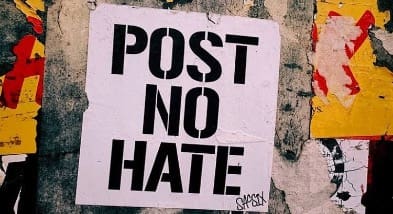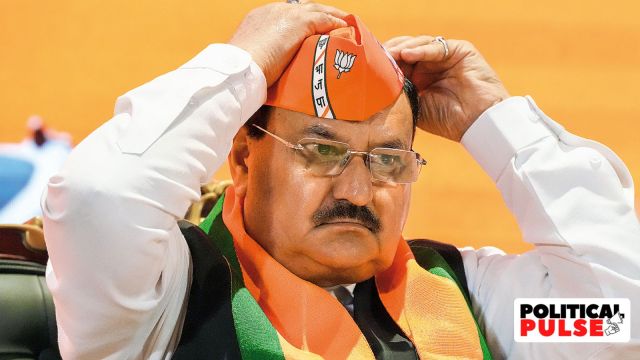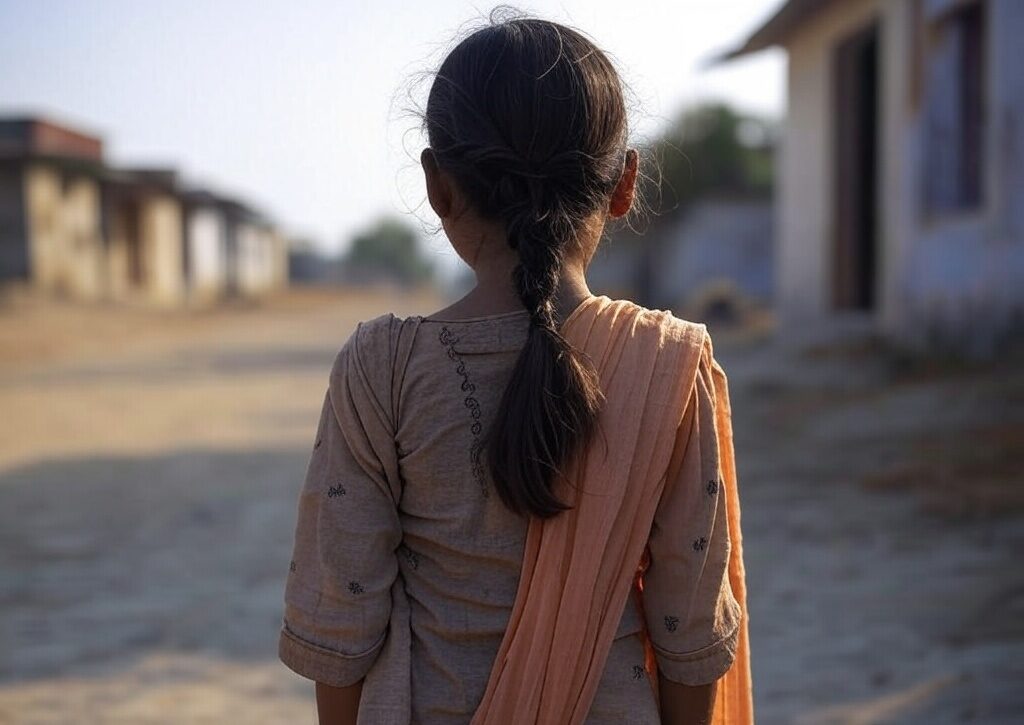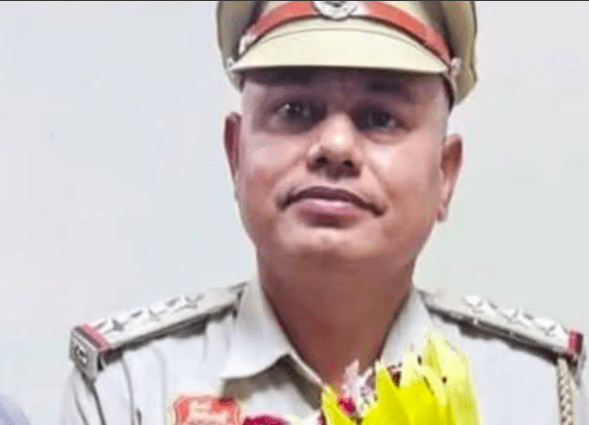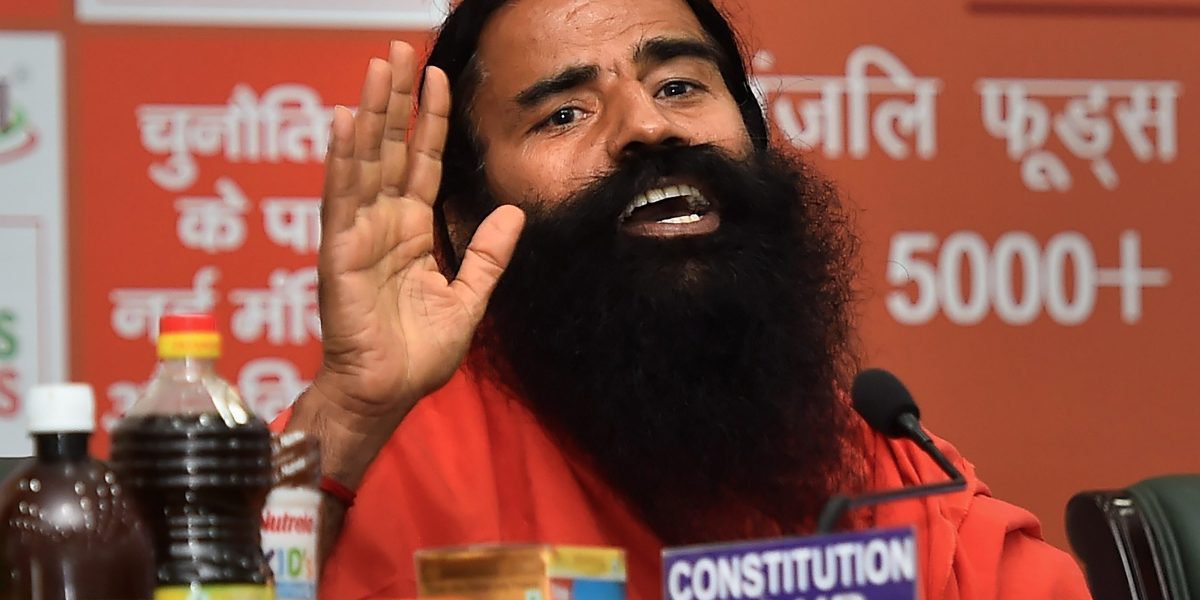GAURI LANKESH writes from Bangalore: Recently, three young men were arrested in Hubli and Honnali on charges of vehicle theft. Since all of them happened to belong to the Muslim community, within a day of their arrests, police sources leaked to the media that they suspected the trio might be involved in planning terrorist attacks all over the country.
This was enough to trigger a series of speculative stories in the State’s media. Every publication and television channel, without exception, went into a competitive frenzy, all of them clamouring for a first shot at the most ‘horrifying’ story about the ‘terrorist trio’.
Almost every reporter with imaginative talent wrote reams of articles quoting unnamed ‘reliable police sources’ or ‘police sources who did not want to be named’ and narrated how the three young men were planning to blow to smithereens most of Karnataka’s key buildings, such as the Vidhana Soudha, place bombs on (predictably) the premises of IT giants Infosys and IBM, detonate bombs in public places, destroy Hindu places of worship and so on.
What was remarkable about these reports was their contention that the three young men had links right up to Osama bin Laden and down to the local ‘sleeper cells’ of various outfits such as the Lashkar-e-Toiba and the banned Students Islamic Movement of India (SIMI). The men were also suspected of conducting arms training in nearby forests, of flying the Pakistani flag, of possessing RDX, of having already distributed arms and weapons to various ‘sleeper cells’ across the state, of recruiting hundreds of youth to terrorist organisations, of possessing AK-47s, of having procured Israeli manufactured arms, etc, etc, etc.
But how much of the content of these reports, well laced with the terms ‘suspected’ and ‘alleged’, had unsubstantiated and un-sourced ‘facts’ attributed to ‘reliable sources’?
As citizens and discerning readers, can we merely accept in good faith that these reports were genuine?
How much of the information carried (leaked) in these reports was a product of the imaginative powers of local reporters? How much was fed by our increasingly inefficient police force? How much was ‘spiced’ up by senior journalists who are forever looking to increase their TRP ratings or circulation figures?
Having already said that all these reports on the ‘terrorist trio’, without exception, were sourced to ‘police officials who did not want to be named’, let us look at one such report to assess how genuine the overall media reports were.
The Mangalore edition of the Kannada daily Udayavani, which adopts a marked pro-Hindutva stance, carried a front-page report that read: “last December Riazuddin Ghouse, Mohammed Asif, Mohammad Abubakkar and Hafeez held a secret meeting where they condemned America’s treatment of people imprisoned at Cuba’s Montessori (!) jail. A copy of the resolutions taken at the meeting has been seized by investigating officers.”
Udayavani is a leading Kannada daily with several senior journalists on its rolls. What is surprising is that not one of them could tell the difference between the word Montessori, used to describe a system of education, and Guantánamo Bay, the name of the prison run by the American government in Cuba. Apparently, in the race for ‘exclusive’ reports, none of them could be bothered with such minor factual details.
Even if one were willing to overlook this rather glaring slip-up by the reporter who filed the story and the senior journalists who okayed it, giving it prime space on the front page, other important questions remain. For example, since when has condemning American atrocities at Guantánamo Bay become a crime? Does this assumption by the police mean that anyone who condemns the unjust imprisonment of people at Guantánamo Bay is a terror suspect?
Are such questions of no importance to the local media?
Apparently not, for instead of raising these valid and significant issues, they carried on blissfully with their ‘exclusive reportage’ based entirely on police sources.
One report, which appeared in The Hindu, can be summed up thus: The fact that one of the arrested youth claimed before the magistrate that his human rights had been violated by the police made the magistrate suspect that he was no ordinary youth. (Does this mean that knowledge of the Constitution, fundamental rights and human rights are not for ordinary Indian men and women?) On the basis of this assumption, the magistrate instructed the police to subject him to a thorough interrogation. And that was when the terrorist links were revealed.
Another report, this one in The Times of India, stated: A warden at the jail became suspicious of Riazuddin Ghouse and Mohammad Abubakkar’s behaviour in the prison where they were jailed on charges of vehicle theft. The duo spoke to each other in low voices, did namaaz five times a day, spoke to one another in English and did not seem to show respect for the national flag when it was hoisted in the morning.
The jail warden conveyed his suspicions to senior police officials and they subjected the duo to interrogation. That was when the youth spilled the beans about their terrorist plans. Had the warden not been such a keen observer of their behaviour the men could well have been let off by the police.
These reports raise a few fundamental questions. Since when has it become a crime to speak of human rights violations? Or speak in a low voice? Or communicate in English? Since when has offering namaaz five times a day become a suspect activity?
As if this were not enough, most or all of the media reported that “religious books and material” were found in the trio’s possession. The media also ‘arrested’ a number of students in its reports even when the police had not in fact done so! Reporters also labelled as “having terrorist links” people who were total strangers to the arrested trio. The list is endless. The end result of all this ‘hyperactivity’ in the media was that the three arrested men were depicted as the most dreaded terrorists this part of the world has seen in recent times.
This reportage took place even as a senior police officer, additional director-general of police Shankar Bidri, told a television channel:
“So far no proof has been unearthed to label these youths as terrorists. The media is indulging in blatant fabrication of news. What if their case too turns out to be another Dr Mohammed Haneef case? (Haneef, who worked in Australia, was mistakenly arrested by the Australian police after being wrongly accused of links to a failed UK terror plot.) Let us not turn into terrorists those who are innocent.”
Sadly, his words of caution fell on deaf ears as the media made merry about Muslim terrorists.
Surely the police need to interrogate the arrested youth and the courts have to pass their judgements before such serious conclusions are drawn? This is why such institutions exist, why the machinery exists in our democracy. It is their job to catch and punish the guilty. But the media seemed to have no time for such ‘niceties’ of democracy or its institutions. It chose to sidestep the process of law altogether and took it upon itself to ‘investigate’ the so-called crime and then pronounced ‘judgement’.
With the media in the grip of this ‘terrorist’ mania, can the saffron brigade be far behind? This time their chosen targets were noted litterateur U.R. Anantha Murthy, and the chairman of the State Backward Classes Commission, C.S. Dwarakanath.
When Anantha Murthy wrote his path-breaking novel, Samskara, more than 40 years ago, there were some who considered it ‘anti-Brahmin’ and sought a ban on it. But since most intellectuals dismissed the allegations, no action was taken against it at the time. In the years since, the novel has not only been made into an award winning Kannada film (the first Kannada film, in fact, to win a national award) but has also been translated into several languages across the globe.
Samskara was also listed as a prescribed textbook at many universities in India and abroad. This includes the Mangalore University, which chose the novel’s Hindi version as part of its syllabus for second year degree students and where Samskara is currently being taught in its colleges.
It must be mentioned here that last year the sangh parivar actively promoted a novel called Aavarana, written by Kannada novelist S.L. Bhyrappa. There have been claims that nearly 20,000 copies of the book were sold, a record breaking figure in the history of Kannada publishing for a work of fiction. (The claims, however, have not been verified.)
For long an ardent supporter of the sangh parivar’s Hindutva agenda, in Aavarana, Bhyrappa conveniently interweaves half-truths with blatant falsehoods and presents this as a work of fiction. Given his claims that the book was based on evidence proved by historical researchers (all of whom belong to the sangh parivar caucus), upon reading the book the lay reader could quite easily form a biased opinion of the Muslim community.
The book portrays the Muslim community as bigoted and out to out-populate the Hindus. It appears to hold the Muslim community responsible for all the sins that Muslim rulers may have perpetrated on Hindus in times past and identifies them as the cause of all the problems the country faces today. In the process, the book aims to whip up Hindu sentiments against the Muslim populace in the country.
Apart from the Muslim community in general and Muslim clerics, writers, filmmakers, etc in particular, the book also targets leftists, secularists and historians who do not agree with the saffron brigade’s version of events past; they are dubbed anti-Hindu. When the book was released, supporters of the sangh parivar hailed it as a great work of fiction while progressive forces denounced it as sheer pamphleteering on behalf of Hindutva forces under the guise of literature.
As this debate raged, Anantha Murthy publicly derided Bhyrappa, calling him a “college-level debater” which, in fact, is exactly what he is. This roused the ire of the rightist forces so much that the leading Kannada daily, Vijaya Karnataka, actually launched an SMS campaign against Anantha Murthy. Vijaya Karnataka (now owned by Bennett, Coleman & Co Ltd of The Times of India group) is another sangh parivar mouthpiece that calls itself a newspaper. It came as no great surprise therefore when the paper carried two pages filled with anti-Anantha Murthy opinions sent in by its saffron brigade readers.
Protesting this vociferous attack on Anantha Murthy, some of us got together and published a selection of essays critiquing Aavarana, a selection that was fairly well received.
The reason why Aavarana has been dealt with in such detail here is its growing presence on the Hindutva map. So far 15 novels by Bhyrappa have already been translated from the Kannada into other Indian languages and today work is afoot to bring out Aavarana in Hindi and other languages. Considering the amount of unadulterated venom it spews at a segment of our population, it is necessary that intellectuals and progressives in other states counter the half-truths and blatant lies contained in the book to prevent further damage to the fabric of our society.
Since Anantha Murthy is opposed to the Hindutva agenda and has spoken out against it vociferously in the recent past, and since he attacked the sangh parivar’s favourite writer, Bhyrappa, the parivar were looking for a way to get back at him. To do this they chose to falsely claim that some portions of Anantha Murthy’s most famous novel, Samskara, were ‘vulgar‘. Aware that it would be difficult, in the current context, to label the work ‘anti-Brahmin’, they made the specious claim that the ‘vulgar’ portions in the book made it difficult for teachers to teach it to ‘children’!
The sangh parivar even managed to get some lecturers who were sympathetic to its agenda to sign a memorandum claiming as much and submitted this to the University authorities with a plea that the book be withdrawn as a textbook.
The saffron brigade’s attempt to target Anantha Murthy using Samskara as a pretext came under scathing attack from intellectuals and progressives in the State. For the moment, any move to withdraw the novel from University syllabi has been put in abeyance. But in reality the sangh parivar has merely set the wheels in motion. For, in coming years, universities will no doubt be wary of recommending the works of any progressive writer as a prescribed textbook. And from that point onwards a conscious attempt will be made to avoid introducing any writer who is critical of the sangh parivar to the next generation of students.
Meanwhile, as one section of the sangh parivar was busy trying to tarnish Anantha Murthy’s image, another found it necessary to attack C.S. Dwarakanath, chairman of the State Backward Classes Commission.
Earlier this month Dwarakanath and other members of the commission visited Coorg in order to inspect existing facilities for the backward classes there. Some commission members visited the ‘religious site’ of Talacauvery—the source of the Cauvery river. According to reports, the priest at Talacauvery asked them to bring Dwarakanath along so he could also receive the ‘holy water’.
In response, one of them told the priest, “He (Dwarakanath) is an atheist who does not believe in such things. He thinks the entire Cauvery river is holy.”
While Dwarakanath himself was blissfully unaware of the incident, word soon spread to local sangh parivar activists. The next morning, when Dwarakanath was alone with just two police constables on guard duty, more than a hundred ‘saffronites’, high on local hooch, laid siege to his room. Led by a former BJP MLA from the area, the drunken crowd surrounded Dwarakanath and demanded why he was “insulting the Cauvery river, insulting Hindu sentiments, and being anti-Karnataka”.
Notwithstanding several attempts to reason with them when Dwarakanath tried repeatedly to explain that he considered all of nature holy, the mob remained unconvinced. Apart from pushing and shoving him around, they forced him to drink the ‘Cauvery water’ they had brought with them in an empty Coca-Cola (!) bottle and forcibly applied tilak on his forehead.
Ever conscious of the big picture, the sangh activists took a cameraman and a reporter from a local TV channel along on their drunken crusade.
Having forced a defenceless Dwarakanath to meekly receive the ‘holy water’ and suffer their tilak application, the saffronites made sure that the entire incident was then telecast across the State. As if that were not enough, they also issued a press note to all publications, falsely claiming that “Dwarakanath had apologised to them for having insulted Hindu sentiments and the Cauvery”.
These three instances only emphasise the obvious. It is abundantly clear that much of the media in Karnataka today has been saffronised, that Karnataka’s Universities are now being made to bow to the sangh parivar’s unreasonable demands and that the Hindutva brigade, despite its claims that all Hindus are one, will brazenly attack even the head of the Backward Classes Commission in the name of Hindu sentiments.
These developments could perhaps be expected, thought ‘natural’, in a State ruled by the BJP. But as of now Karnataka is under President’s rule. Yet, it is the saffron brigade’s aggressive agenda that dominates the political and public discourse. This pointed shift in Karnataka’s polity is the legacy of a BJP-Janata Dal (Secular) coalition that was in power for all of 20 months.
During this short span of time, a systemic infiltration of the system inflicted grievous damage. Today Hindu progressives are labelled ‘Naxalites’ even as Muslim progressives are targeted as ‘Islamic terrorists’. The same holds true for many pro-people, pro-secularism organisations as well.
It is no wonder then that the police gleefully entertain complaints by saffronites falsely alleging that secularists like Prof Nagari Babaiah of the People’s Democratic Forum ‘insult Hindu gods’ in their public speeches, that Kalkuli Vittal Hegde, leader of the Adivasis living in the Kudremukh forests, has insulted Dalits, that Hegde’s wife is indulging in prostitution, that volunteers working for the rights of the Adivasi people are abetting Naxalites in the area and so on.
Not long ago, the local administration and police rounded up local Muslims, at random, on the basis of specious complaints filed by sangh parivar activists. The same police force turns a blind eye when sangh parivar activists assault Muslims on charges of transporting cattle to slaughterhouses. The same police force coolly releases RSS activists accused of setting a bus on fire and causing the death of two people over the Ram Sethu issue without even a thorough investigation. The list goes on.
Thanks to the police and the administration’s active encouragement of such violent and unlawful behaviour, activists of the sangh parivar enjoy complete immunity and it is they who systematically file innumerable complaints against Muslims and progressive Hindus.
Recently, Pramod Mutalik, leader of the Sri Rama Sena, had the gumption to say, “We have given a list of suspect Muslims to the police at Hubli. It is unfortunate that they have arrested only one person. If the police do not immediately arrest the rest of the people on our list, we will take up widespread protests.”
The sangh parivar has always considered Karnataka its gateway to the south. The last time they were in power, the gates were only partially opened to them but a foothold was all they needed. It was more than enough for them to sow their seeds of hatred. Those seeds have sprouted now and with the elections only a few months away, the BJP will no doubt be reaping a rich harvest.
With the Janata Dal(S) having committed political hara-kiri by supporting the BJP, and the Congress party’s perennial indecision on if and how to counter the sangh parivar, Karnataka, it seems, is unfortunately and irreversibly hurtling towards its new position as the Gujarat of the South.
This story first appeared on churumuri.blog


